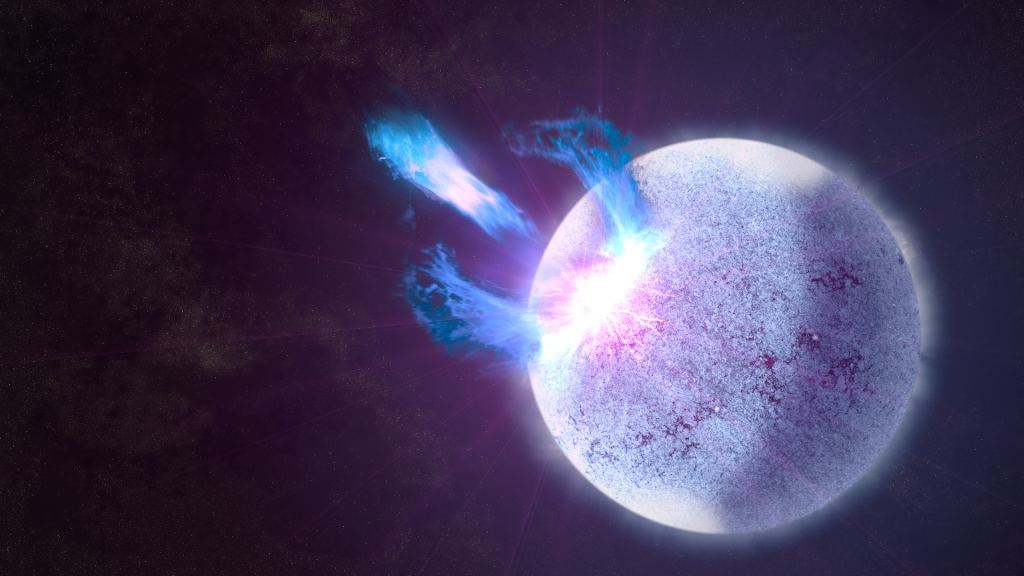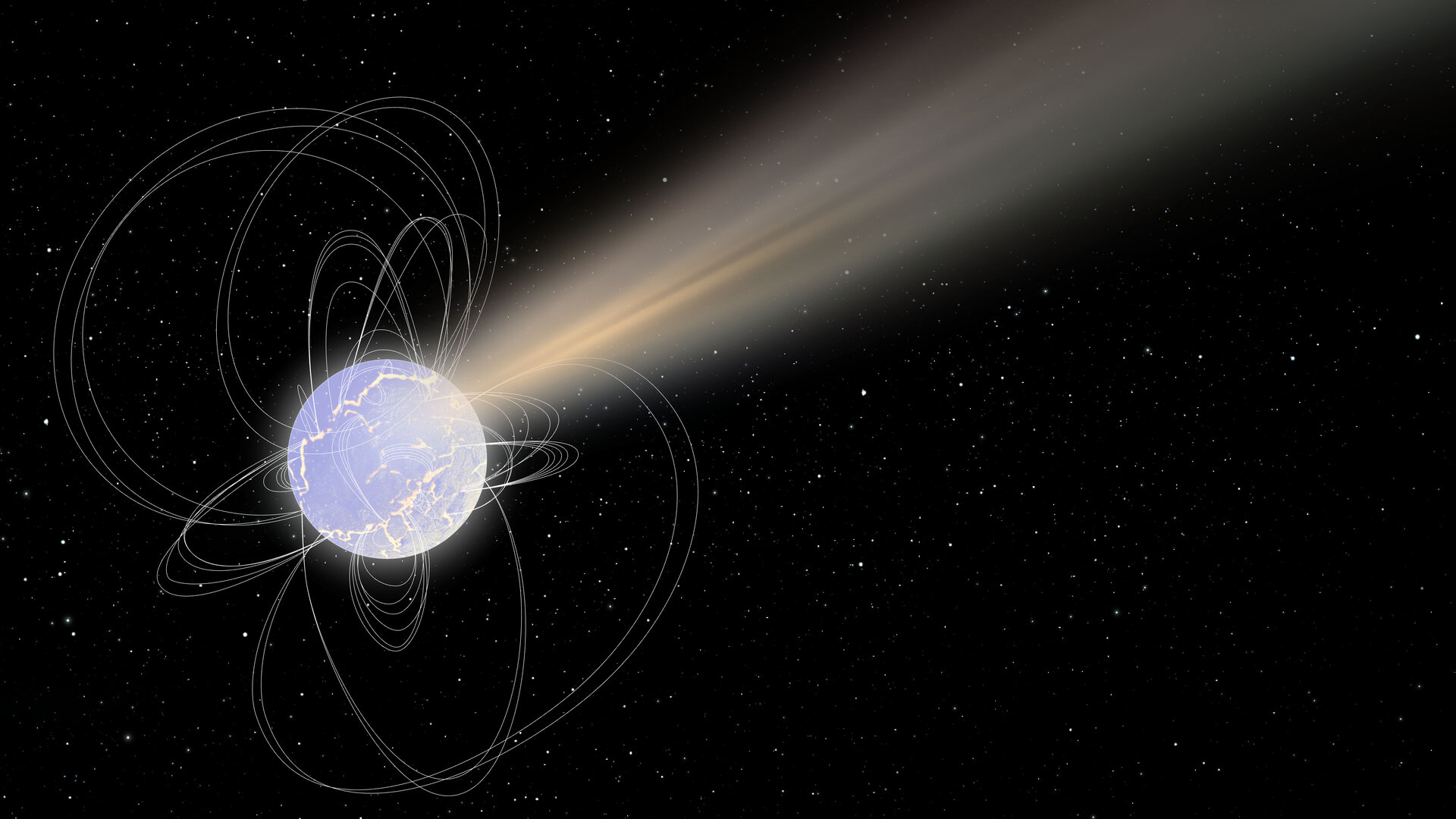Magnetars are the ultimate aggressive star: intense magnetic fields, massive outbursts, the works. We’ve known that magnetars are capable of producing some of the most powerful blasts in the cosmos, but new observations reveal a different kind of radiation: radio waves. This could potentially solve the long-standing puzzle of the origins of the mysterious Fast Radio Bursts.
Neutron stars are the leftover cores of massive stars, a single ball of neutrons only a few miles across. On the scale of cosmic weirdness, they’re near the top: imagine a city-sized atomic nucleus, and you’re in the right ballpark. And magnetars are a special breed of neutron star, sporting the absolute strongest magnetic fields in the known universe.
And they’re in a really, really bad mood.
Occasionally magnetars can randomly flare, releasing more energy in a second than our sun can over billions of years.
Like I said, bad mood.

Recently, the ESA’s Integral satellite captured such a high-energy flare from SGR 1935+2154, a magnetar hanging out in our own Milky Way galaxy. Immediately after the flash, Integral sent out a worldwide alert, telling other observatories where to look, in case they found something interesting too.
They did.
The CHIME radio array in Canada recorded a blip coming from the same patch of sky: an exceedingly rare and exceedingly mysterious Fast Radio Burst, or FRB. FRBs were first discovered in 2007, and have remained a puzzle ever since. They are an intense blast of radio emission lasting only a few milliseconds, but always from far outside our galaxy, making them hard to understand.
Something scary must create FRBs, and magnetars have long been in the lineup. But now, with the combined high-energy signal received by Integral and the radio signal received by CHIME, magnetars are suspect number one…with a magnetic bullet.

